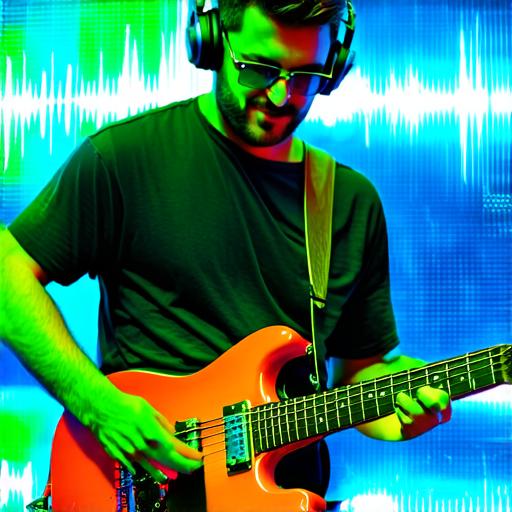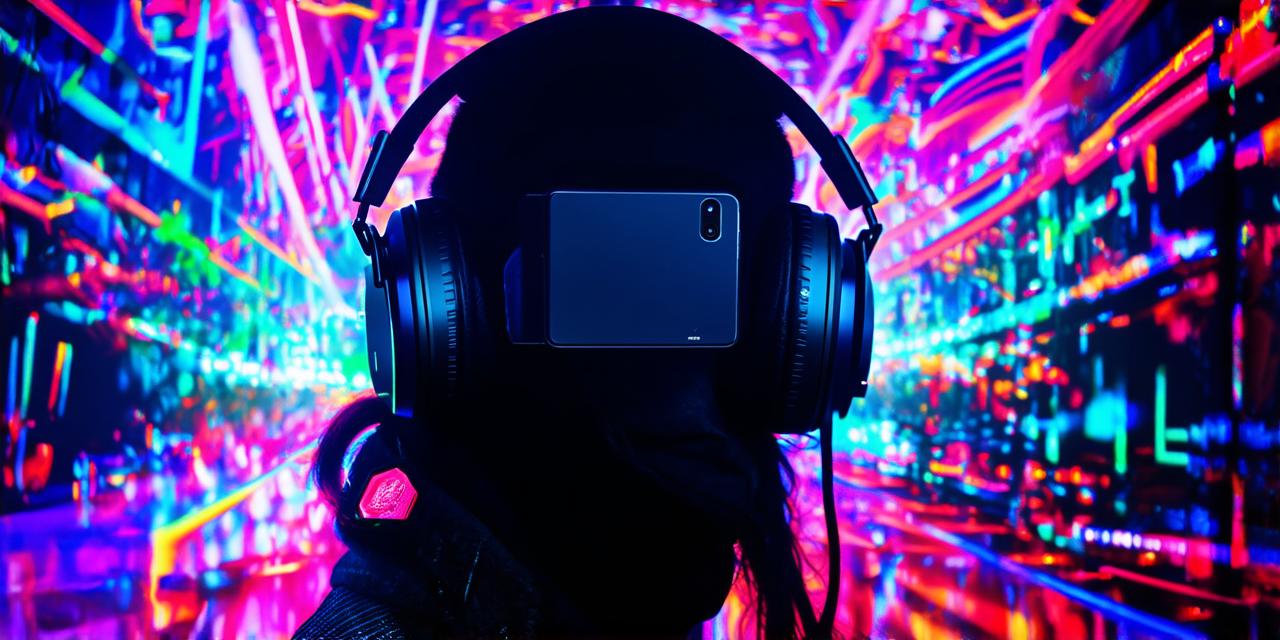
One example of how AR technology is being used in music videos is the use of virtual objects and characters to enhance the visual experience. For example, the music video for “Bad Blood” by Taylor Swift features a virtual army of clones that dance alongside the main character, creating a surreal and visually stunning effect.
Another example is the use of AR-enhanced concert posters. These posters feature interactive elements that allow fans to experience a virtual concert even before the actual event takes place. For example, the poster for Lady Gaga’s “Joanne” tour included an AR filter that allowed fans to try on a virtual outfit and see how it looked on them.
AR technology is also being used in live performances to create immersive and interactive experiences for the audience. One example of this is the use of AR-enhanced costumes for dancers. These costumes incorporate sensors and LED lights that react to the dancer’s movements, creating a mesmerizing visual effect.
Another example is the use of AR-enhanced stage sets. For example, the stage set for the 2018 Grammy Awards featured an AR-enhanced backdrop that allowed performers to appear in different locations within the set. This created a sense of depth and immersion that was not possible with traditional stage sets.
The Benefits of AR in Music Videos and Live Performances
There are several benefits to using AR technology in music videos and live performances. Firstly, AR technology allows artists to create visually stunning and immersive experiences for their audience. This can help to capture the attention of viewers and make the experience more memorable.
Secondly, AR technology can help to engage the audience on a deeper level by creating interactive elements that allow them to participate in the experience. For example, the use of virtual objects and characters in music videos can create a sense of immersion that draws the viewer into the story.
Finally, AR technology can help to break down barriers between the artist and their audience. By incorporating AR elements into live performances, artists can create a more intimate and engaging experience for their fans.
Case Studies: How AR is Being Used in Music Videos and Live Performances
One example of how AR technology is being used in music videos is the use of virtual objects to enhance the visual experience. The music video for “Blinding Lights” by The Weeknd features a virtual object that appears throughout the video, adding an element of intrigue and mystery to the overall concept.
Another example is the use of AR-enhanced concert posters. The poster for Lady Gaga’s “Joanne” tour included an AR filter that allowed fans to try on a virtual outfit and see how it looked on them.
In live performances, the use of AR-enhanced costumes for dancers has become increasingly popular. The dance group Daft Punk famously used AR-enhanced costumes in their live performances, creating a visually stunning and immersive experience for the audience.
Expert Opinions: How AR is Transforming Music Videos and Live Performances
“AR technology has the potential to revolutionize the way we experience music videos and live performances,” says music video director Peter Lord of Aardvark Films. “It allows artists to create immersive and interactive experiences that engage their audience on a whole new level.”
Similarly, concert promoter Live Nation believes that AR technology has the potential to transform the concert experience. “By incorporating AR elements into live performances, we can create a more engaging and memorable experience for our fans,” says Live Nation spokesperson Sarah McEwen.
In conclusion, augmented reality is transforming music videos and live performances by allowing artists to create visually stunning and immersive experiences that engage their audience on a deeper level. With the potential to revolutionize the way we experience music, AR technology is set to continue shaping the future of the music industry.
